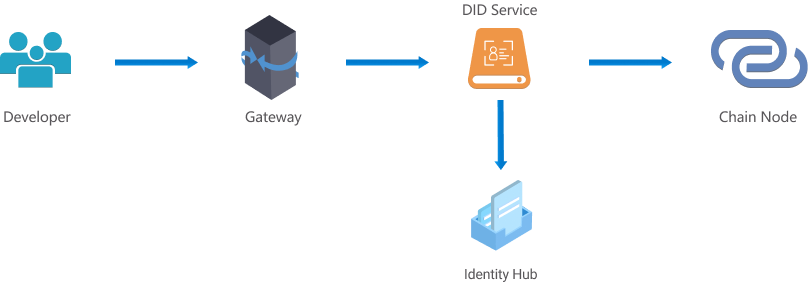10 DID Services
10.1 Overview
With blockchain technology as the cornerstone and W3C DID as the specification, BSN DID Services achieve decentralized on-chain mapping of real entity, thus achieving the ability to provide digital identity and digital credential interaction for individuals/organizations.
Roles
In the DID ecosystem, there are three roles: User, issuer and verifier.
User: Any individual/organization/entity that has a digital identity on the chain. Any entity object can create and manage its DID through the developer’s project.
Issuer: The individual or organization that can issue the digital credentials For example, if a university can issue a digital diploma to a student, then the university is an issuer.
Verifier: Also known as a business party, is an individual or organization that uses digital credentials. After being authorized by the user, the verifier can verify the identity of the user or their digital credentials. For example, when a company hires someone, it needs to verify his college diploma, then the company is a verifier.

Components
The DID system consists of three components: SDK, Service and Smart Contract. The SDK can be integrated in the developer’s project; Service handles the business logic and connects the private data storage area (Identity Hub) to the chain node; the smart contract is deployed on the chain, and the methods in the contract is called by the Service.

Functions and features
Deployed on the BSN, the DID Service builds a decentralized digital identity management system, which facilitates autonomous participation and affirmative collaboration among users, issuers and verifiers.
Provide a unified decentralized digital identity management, including identifier creation, update and verification functions.
Provide mechanisms for issuance, authorization, verification and revocation of user data credentials.
Provide a private data storage area (Identity Hub) where credentials are fully controlled by users, and is stored and transmitted in encryption.
Provide unified access to API services and SDKs, integrate object encapsulation, signature, verification and other methods for easy docking by developers.